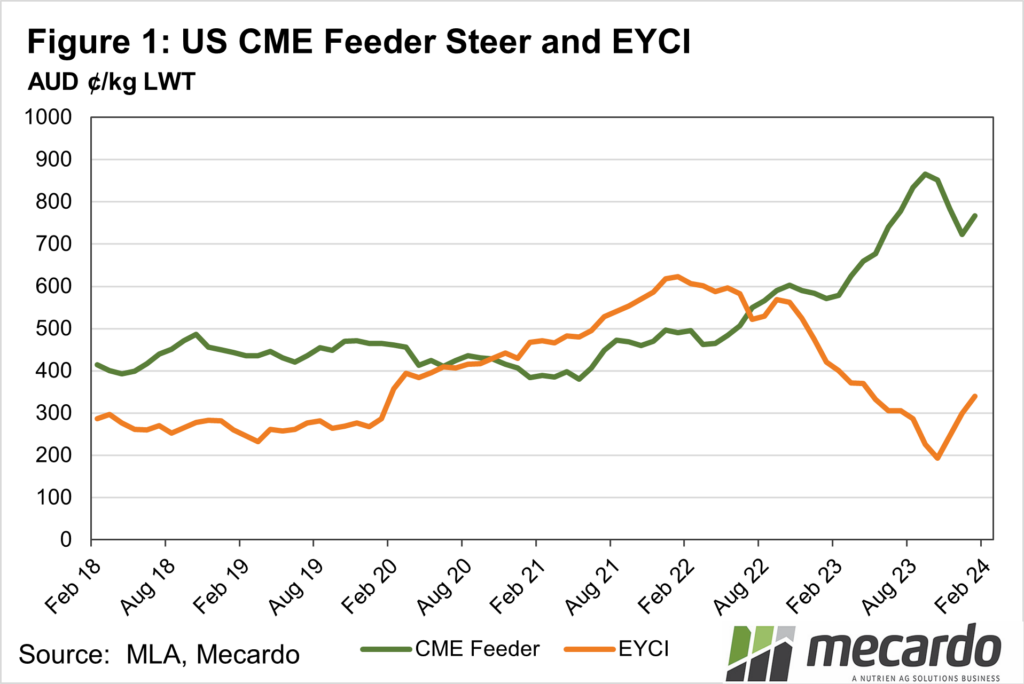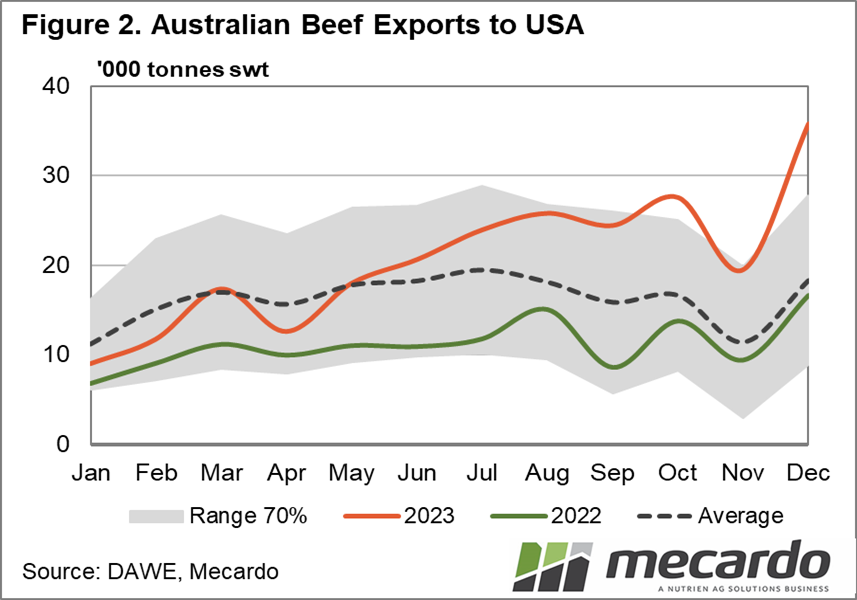There has been lots of commentary recently about the US beef herd and its state of liquidation, with their national herd reaching its lowest level in decades. As the liquidation continues, it delays the beginning of the herd rebuild. The opportunity for Australia as an exporter of beef continues to grow into the US, but also globally.
Drought plagued major
cattle production areas over the United States for the majority of 2023.
According to the USDA, the average percentage of cattle inventory situated in drought-affected
areas for 2023 was 43%. This has been driving the widespread destocking that
has led to the US cattle herd being cut to a 60-year low.
The destocking has
pushed the price of US cattle higher and higher as supply continues to decline.
Looking at the CME feeder cattle index the January 2024 average is 68% above
the 5-year average for the index, which has further led producers who have
stock to offload them and cash in on the high prices. Prices peaked for the
index in September last year, at the same time Australian cattle prices were at
their lowest in 5 years.
With the declining
herd size and record prices, the US international trade is shifting. US beef exports are down, and imports are up according to the USDA’s Livestock, Dairy, and Poultry Outlook: January 2024. Looking at the
period between January to November 2023 vs 2022, beef exports for the US are
down 15% (223 kt) whilst their imports were up 9% (126 kt).
Australian exports (US imports from
Australia) have increased 60% (100kt) in the same period, making up 80% of the
increase in US imports. New Zealand has also seen an increase in demand from
the US with a 33% (56kt) increase in exports destined to the US as they look to
satisfy the nation’s demand.
The increase in beef imports from the US is
trending up, with November 2023 being the 3rd largest month ever. Forecast
estimates that this trend will continue into 2024 with more international beef
required for US consumption. Similarly, demand from other countries for beef is
also impacted by the US’s ability to supply them with beef.
What does it mean?
We expect to see an increase in exports not only to the US but also to other countries that have relied on US beef. This will have a positive impact on the price of Australian beef through increased demand and will also offer support to saleyard buyers managing the elevated supply of cattle to the yards we have seen recently.
Have any questions or comments?
Key Points
- The US beef herd liquidation phase has continued, with the herd down 2% year on year.
- This is causing a shift in the US involvement in the international trade of beef.
- Extra demand from the US for imports is forecasted which will benefit producers in Australia.
Click on figure to expand
Click on figure to expand
Data sources: USDA, MLA, CME, Mecardo














